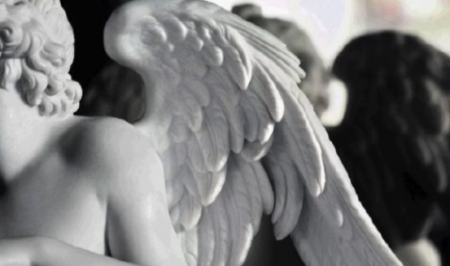foto Sake Elzinga
On a warm evening in April, I walk across a square in the new city that I call Madrettor.
This city must have been known by another name in the past, but with the passage of years and events I have forgotten its previous name. I am on my way to buy the evening newspaper in the ‘Book Palace’ that stands in one corner of the square. The new city has been called ‘Madrettor’ since most of the inhabitants of the earlier city – the pioneers – abandoned it in disgust at the changes that were quietly, gradually and irretrievably taking place. As they departed, they left all kinds of artefacts behind; images that were once important to them. I walk across this square in Madrettor every day and look at the faces of my new fellow citizens. Most of them are Mediterranean faces with a fair sprinkling of Eastern and African ones. Those of the men resemble classical sculptures; the features of the women, despite their sometimes frivolous appearance, remind me of depictions of the Madonna in renaissance paintings. What I do remember is that their arrival in the old city gave rise to the new name: Madrettor. Amid thousands of other inhabitants of this city, I find myself in a place that has rapidly been taking on a new form over recent years. Tall buildings surround the square, which reminds me of the courtyard of a castle. In the centre of the square, someone once erected a sculpture consisting of two big, metal sheets mounted on either side of a metal mast. In the wind, they revolve around their axis. The sculpture makes me think of wings left behind by an angel. An angel discarded her heavenly costume and became human. Two enormous panels rotate threateningly above us; perhaps they are the stone tablets of Moses, with ominous commandments engraved upon them. Or are they the wings of hope, anxiously fluttering: “Give me today my daily sculpture”?
And again I walk on a warm, spring evening, across a square and towards the Madrettor book palace to buy a book.
This book’s title is derived from a phrase in a poem by Rainer Maria Rilke: “Change direction, take a different course, find meaning.” In the meantime, the world has changed, and the city with it: the city’s original name is now pronounced backwards and all the ideas and attitudes, once immortalised in the statues placed along streets and next to buildings, sing themselves free in different tones from the liturgies of dogmas that were firmly embedded for decades. They dissolve ever faster in the briny air current of change, which begins in an upper atmosphere and gradually descends to lower regions. We are all touched and shaped by new conditions; we, the people of Madrettor; we, urbanites, cosmopolitans. The people of the old city could not, or would not, endure these conditions and they abandoned the city in which they grew up. The artefacts left behind are what prove to be the links between the period of expectations and building and the first moment of the new age, in which the gates are opened to the world. In the succeeding years, the world took on an appearance that seduced us as often as it made us fearful. After all, the shadow side of beauty – the angel – is terror. And every day, I walk across that square in the new city, looking at the statue of an angel, and I know that life changes me whether I wish it or not; that it is not dogmas that endow things with meaning, but images that randomly and spontaneously generate themselves.
29 september 2011
